
Before America's entry into World War II, Charles Carpenter was a U.S. History teacher at a high school in Moline, Illinois and a 2nd Lt. in the Army Reserve. That all changed on December 7, 1941. By early 1942, Carpenter entered the U.S. Army and eventually earned his Liaison wings in the likes of Aeronca L-3 Defenders, Piper L-4 Cubs, and Stinson L-5 Sentinels.
Earning his "L" wings
Fort Sill, Oklahoma was selected as the post used for operational training of pilots, mechanics, and observers in "the tactical employment of organic air observation in Field Artillery units." By June of 1942, the pilot course was designed to be five to seven weeks long depending on student experience levels. Its primary focus was to train the students in the extremes of the limits of the airplane and flight envelopes they would face.
The course was developed in stages, with Stage A comprising of re-familiarization of flying techniques. Stall and spin recovery along with rapid descents were given top billing before students were allowed to proceed to Stage B. During this stage, a minimum of 20-35 hours emphasized techniques and accuracy for short-field landings and takeoffs over 20-foot barriers, minimum landing rolls and crosswind landings. Students learned to operate from tactical airstrips that were as close as possible to those supporting artillery units and battalions, and evasive maneuvers gave the students a glimpse of what would be encountered in actual combat. Stage C brought all the previous Stages together and focused on a minimum of 10 hours during which students participated in live-fire exercises with observers, along with focusing on aerial resupply, aerial evacuation of sick and wounded soldiers, aerial photography and message relay, motor convoy, camouflage inspection, and control and rapid transportation of unit commanders.
This story is from the May - June 2023 edition of Flight Journal.
Start your 7-day Magzter GOLD free trial to access thousands of curated premium stories, and 9,000+ magazines and newspapers.
Already a subscriber ? Sign In
This story is from the May - June 2023 edition of Flight Journal.
Start your 7-day Magzter GOLD free trial to access thousands of curated premium stories, and 9,000+ magazines and newspapers.
Already a subscriber? Sign In

Keeping 'em Flying!- The new generation of warbird pilots, restorers and mechanics
The new generation of warbird pilots, restorers and mechanics. Nearly 80 years after the end of World War II, the fighters, bombers, and trainers that defended freedom continue to enthrall and inspire audiences at airshows, thanks to generations of warbird pilots, maintainers, restoration specialists and collectors. In our September, 2022 issue we introduced you to the young warbird pilots, maintainers and restorers who are already beginning to displace more "experienced" warbird fliers and fixers.

The Corsair Maker- Bringing the Vought Corsair to the fleet was a daunting challenge that spanned nearly three years.
When the first production Corsairs exited the Stratford factory in June 1942, Guyton, as seen here, was tapped to manage the flight and production test program. Armament was improved to six wing-mounted .50s, displacing the wing fuel tanks now placed forward of the cockpit which necessarily was moved rearward by 32 inches. Overall length was increased, armor plate added, landing, arresting and tail gear improved, aileron control enhanced, and a new version of the R2800 engine was incorporated. But those significant improvements unearthed numerous idiosyncrasies that would take an extended period to make the Corsair acceptable for carrier operations
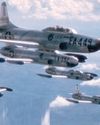
STARFIRES Over Korea
F-94 pilots tangle with MiGs
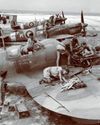
Training Mission
BY THE TIME THIS TRAINING SCENE WAS RECORDED in Canne, Italy, in July 1944, Allied Yugoslavian airmen had several years of experience working side by side with the RAF.
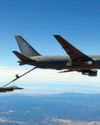
KC-46A PEGASUS
Next generation aerial refueler
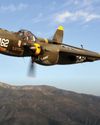
"SATAN'S ANGELS" ACE - Tales from a P-38 pilot in the South Pacific
\"AS A KID GROWING UP on the bow of my father's tugboat, hauling oil from Seattle to Alaska, I had a lot of time on my hands.
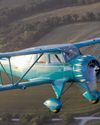
WACO YKC - Stunning and Ultra Rare Golden Age Cabin Flier
BETWEEN THE IMPLEMENTATION of the Air Commerce Act of 1926 and December 31, 1948, all U.S. registered flying machines sported an N-number, much as they do today, the \"N\" being an internationally recognized identifier for the United States. During that period, however, an additional letter-identifier followed the \"N.\" Depending on their category, they were registered in the NC (Commercial), NG (Glider), NL (Limited), NR (Restricted, usually meaning race airplanes), NS (State government), and, finally, NX (experimental).
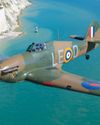
BADER'S HURRICANES
Double amputee fighter ace Douglas Bader and his Battle of Britain Hurricanes
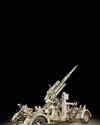
Scourge of the Allied Fighters
IT HAD TO BE THE MOST HELPLESS FEELING in the world: you're at 25,000 feet over Europe knowing that your primary function is to drop bombs-or flying escort for the bombers while being a slow-moving target for some of the world's finest shooters. However, you have John Browning's marvelous .50 caliber invention to give some degree of protection. Unfortunately, you're absolutely helpless against flak. Piloting and gunnery skills play no role in a game where sheer chance makes life and death decisions. For that reason, the Krupp 88 mm Flak 18/36/37 AA cannon could be considered WW II's ultimate stealth fighter. You never saw it coming.
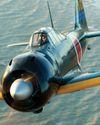
ZERO MYTH, MYSTERY, AND FACT
A test pilot compares the A6M5 Zero to U.S. fighters